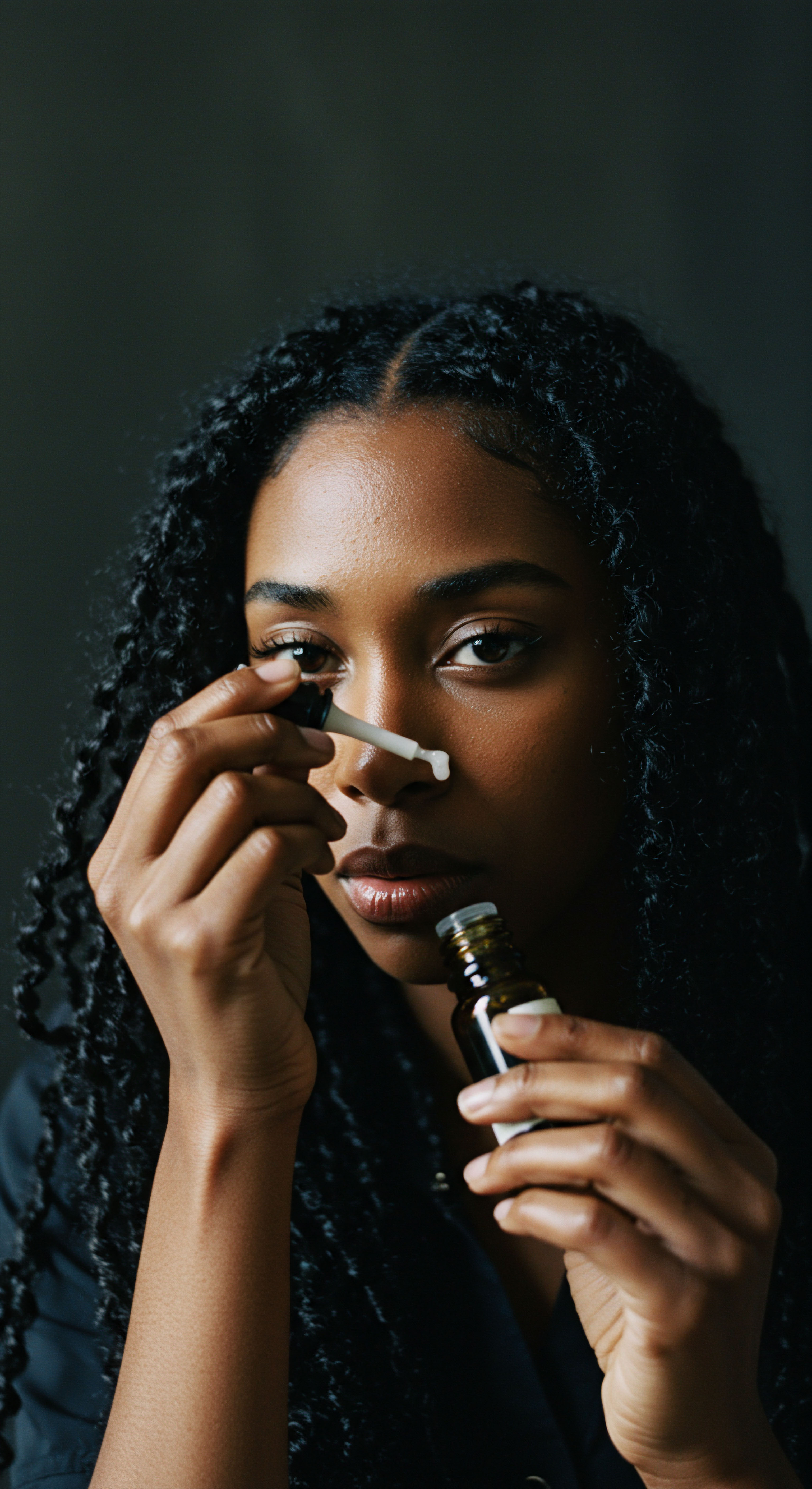
Roots
There exists a quiet wonder in the strands that crown us, a profound story etched within each curl and coil. Many perceive hair as a simple adornment, a canvas for self-expression, yet beneath the visible surface lies a universe of intricate architecture, a biological marvel that shapes our daily experience with our tresses. To truly nurture coils and curls, one must first listen to the whispers from their very core, to the structural truths that dictate their resilience, their thirst, and their magnificent spring. This initial voyage invites us to consider the foundational principles of hair, not merely as a surface to be styled, but as a living entity with inner workings that profoundly influence its vitality and response to care.
Our journey begins with the microscopic realm, where the unique characteristics of textured hair begin to reveal themselves. Understanding the inner layers of a hair strand offers more than academic interest; it provides a compass for navigating the often-perplexing world of hair care. When we speak of hair’s inner layers, we refer primarily to the cuticle, cortex, and medulla—each playing a distinct, yet interconnected, role in the overall health and appearance of our curls.

Hair’s Hidden Architecture
The outermost layer, the Cuticle, presents as a series of overlapping scales, much like shingles on a roof. In straight hair, these scales typically lie flat, creating a smooth surface that reflects light uniformly. For coils and curls, however, the cuticle’s arrangement is often more complex, influenced by the hair shaft’s elliptical shape and its helical growth pattern.
These scales tend to be more lifted, particularly at the curves of the coil, which can affect how moisture is retained and how easily tangles form. This inherent characteristic means textured hair often requires particular attention to sealing the cuticle to maintain hydration and reduce friction.
Beneath this protective shield lies the Cortex, the heart of the hair strand. This region is composed of keratin proteins, long fibrous structures twisted into intricate bundles. The cortex is responsible for hair’s strength, elasticity, and color. In coiled hair, the cortical cells are not uniformly distributed; instead, they exhibit an asymmetrical arrangement, contributing to the hair’s helical shape.
This asymmetry, coupled with the unique distribution of disulfide bonds (the chemical links that stabilize keratin), grants coils their distinctive spring and resilience. The way these proteins are arranged also dictates how hair reacts to chemical treatments, coloring, and heat.
Unlocking the secrets held within hair’s inner layers provides a powerful framework for truly personalized and effective daily care.
The innermost layer, the Medulla, is not present in all hair types or even all strands. When present, it appears as a central core, often described as a hollow channel. Its precise function remains a subject of ongoing scientific inquiry, but some research suggests it may play a role in regulating hair temperature or contributing to hair’s overall strength. For textured hair, the medulla’s presence and characteristics can vary widely, adding another layer to the unique properties of each individual’s coils.
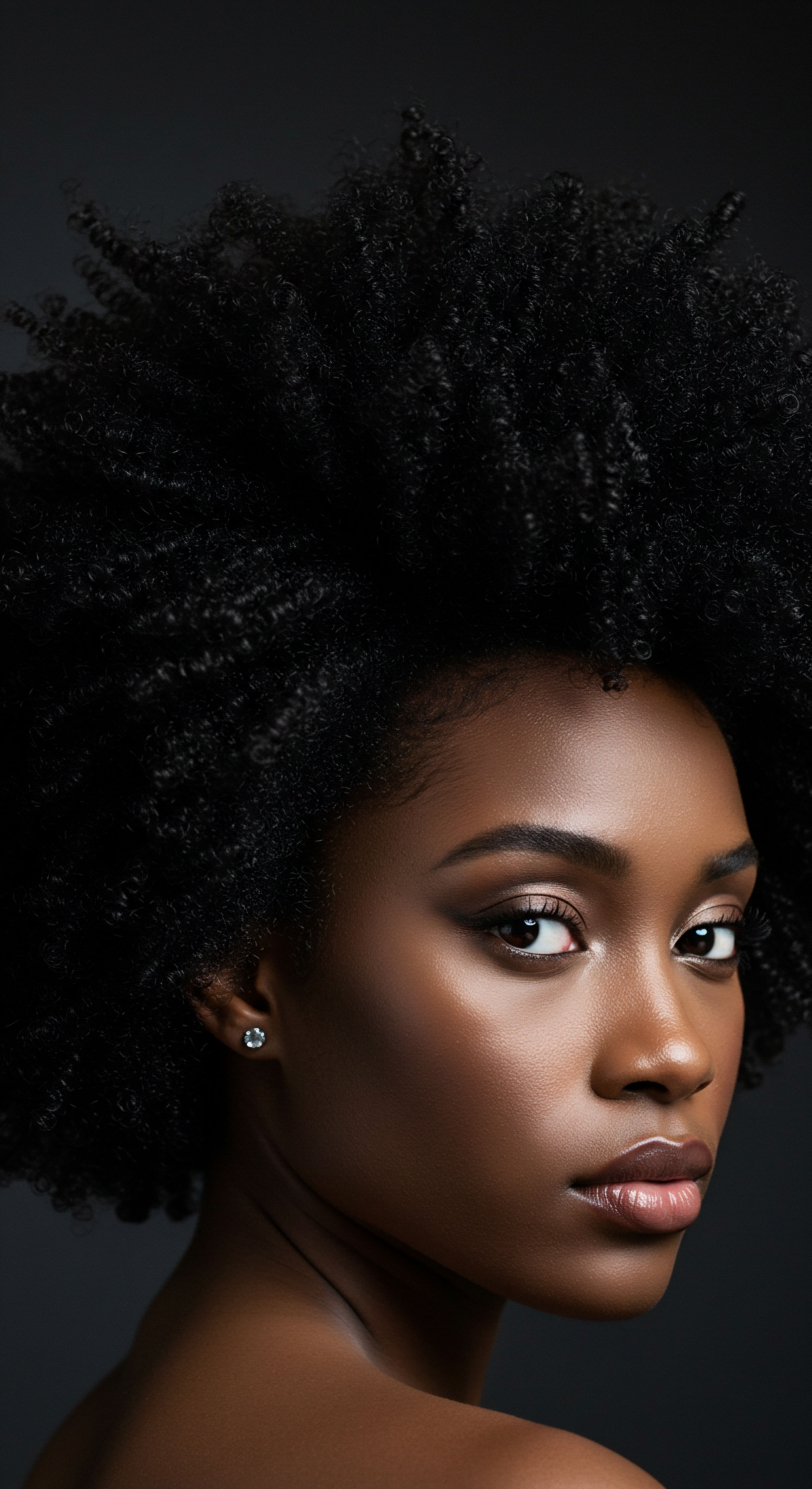
Why Does Internal Structure Matter for Daily Routines?
Understanding these layers transforms hair care from a trial-and-error exercise into an informed, deliberate practice. For instance, the naturally lifted cuticle of coiled hair explains why these textures are prone to dryness. Products designed to smooth the cuticle, such as leave-in conditioners and sealing oils, become indispensable. Similarly, knowing the cortex holds the key to elasticity helps us select treatments that bolster protein bonds, preventing breakage and maintaining the hair’s natural spring.
- Cuticle ❉ The outer protective shield, often lifted in coils, influencing moisture retention and tangling.
- Cortex ❉ The inner core of keratin proteins, determining hair’s strength, elasticity, and curl pattern.
- Medulla ❉ The innermost channel, sometimes present, with a less understood role, possibly relating to thermal regulation.
Consider the phenomenon of hair elasticity, a measure of how much a hair strand can stretch and return to its original state without breaking. This quality is largely determined by the cortical structure. A study published in the Journal of Cosmetic Science examined the mechanical properties of different hair types, revealing that while African hair can exhibit lower tensile strength compared to Caucasian or Asian hair, its unique helical structure provides distinct mechanical advantages in terms of resistance to deformation under certain stresses.
This suggests that while individual strands might be more fragile in terms of direct pulling, the overall structure of a coil pattern offers a different kind of robustness, highlighting the importance of understanding the system rather than just isolated components. This insight prompts a shift in focus from merely strengthening individual strands to supporting the integrity of the coil itself through gentle handling and elasticity-boosting treatments.

Navigating the World of Hair Porosity
The concept of hair porosity, often discussed in textured hair communities, is directly tied to the state of the cuticle. Porosity refers to hair’s ability to absorb and hold moisture.
Hair with Low Porosity has tightly bound cuticles, making it difficult for moisture to penetrate but also challenging for it to escape once inside. This hair type often benefits from lightweight products that can easily slip past the cuticle, and from heat application during deep conditioning to gently lift the cuticle scales.
Conversely, High Porosity hair has widely open or damaged cuticles, allowing moisture to enter and leave quickly. This hair type requires heavier, more occlusive products to seal the cuticle and prevent rapid moisture loss. Protein treatments can also assist in temporarily filling gaps in the cuticle, providing added strength and reducing moisture escape.
Recognizing your hair’s porosity, a direct reflection of your cuticle’s behavior, is a foundational step in selecting appropriate products and techniques. It is a direct pathway to making informed choices that honor your hair’s inherent structure.

Ritual
With a grounding in hair’s inner workings, our focus now turns to the practical alchemy of daily care—the rituals that transform scientific knowledge into tangible, thriving coils and curls. This is where theory meets practice, where the delicate dance of moisture, protein, and gentle manipulation takes center stage. Our daily routines are not just about superficial gloss; they are conversations with our hair’s core, responses to its needs, and acknowledgments of its inherent design. How we cleanse, condition, and style, each step, holds the power to either fortify or diminish the structural integrity we now understand.
The true art of caring for textured hair lies in a deep attunement to its signals, informed by the wisdom of its internal composition. It is a continuous dialogue, where observation guides action, leading to routines that truly serve the hair’s distinct requirements.

Selecting Cleansers and Conditioners
Armed with insights into the cuticle and cortex, product selection shifts from guesswork to strategic choice. For coils and curls, the goal of cleansing is often to remove buildup without stripping away essential moisture. Sulfates, while effective at cleansing, can sometimes be overly aggressive for the naturally drier, more lifted cuticles of textured hair.
- Low-Lather Cleansers ❉ These gentle formulations help preserve the hair’s natural lipid barrier, preventing excessive moisture depletion from the cuticle.
- Hydrating Conditioners ❉ Look for ingredients that bind water to the hair (humectants) and those that seal the cuticle (emollients and occlusives). These work in concert to replenish the cortex’s moisture content and smooth the outer layer.
The conditioner, in particular, serves as a crucial partner in cuticle management. By depositing conditioning agents, it helps to flatten the cuticle scales, reducing friction and enhancing shine. For hair with higher porosity, heavier conditioning agents and even protein-containing conditioners can assist in temporarily filling gaps in the cuticle, offering a smoother surface and better moisture retention.
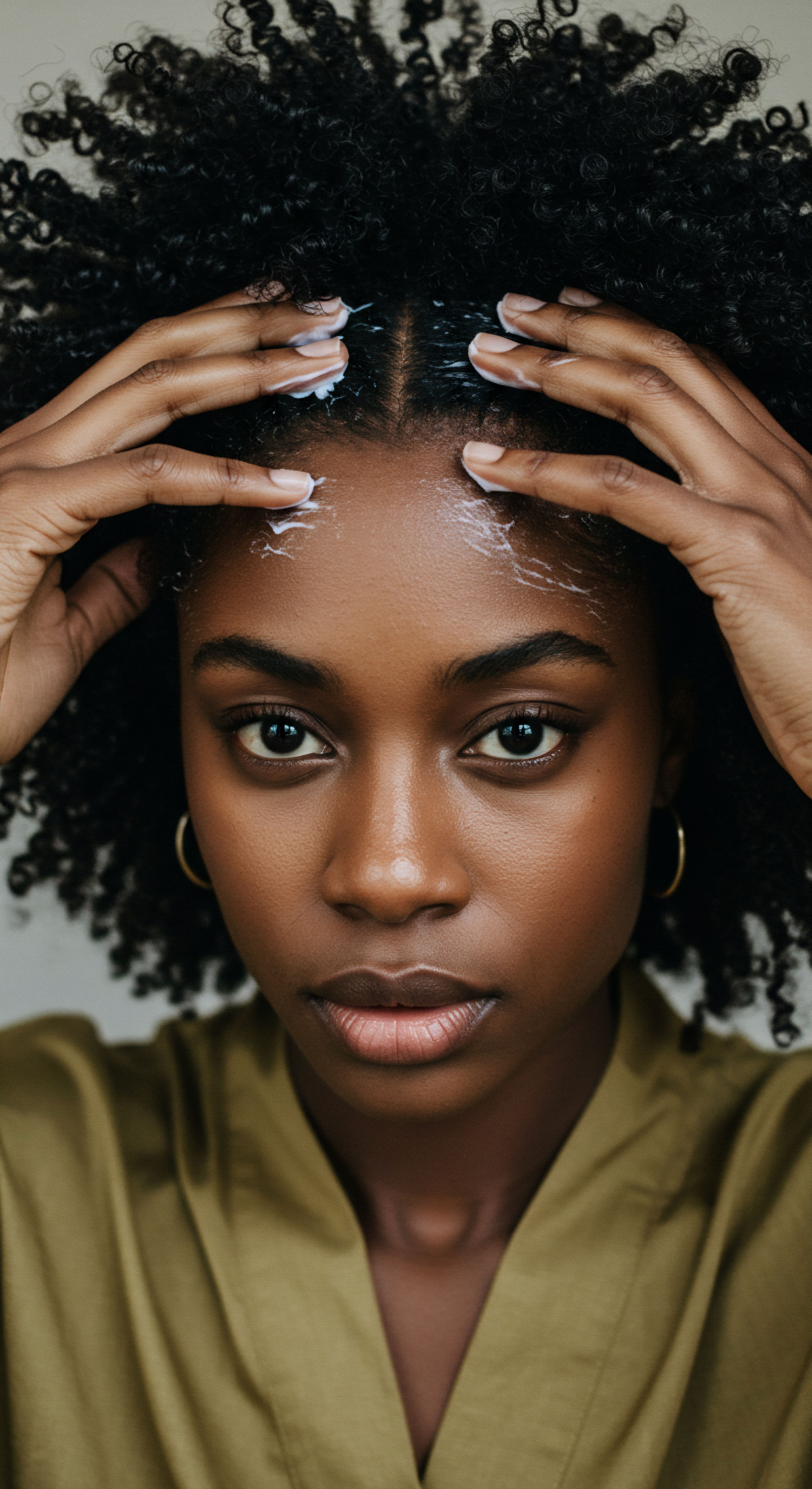
The Practice of Deep Conditioning
Deep conditioning transcends a mere weekly treatment; it is a foundational pillar for textured hair health, directly addressing the needs of the cortex and cuticle. These treatments are formulated with higher concentrations of active ingredients, designed to penetrate deeper into the hair shaft.
For example, a deep conditioner rich in hydrolyzed proteins can temporarily bolster the protein structures within the cortex, enhancing elasticity and strength, particularly beneficial for hair that feels weak or lacks its usual spring. Simultaneously, humectants and emollients present in these formulations work to saturate the cortex with moisture and lay down a protective film on the cuticle. The application of gentle heat during deep conditioning, such as with a steamer or a hooded dryer, can subtly lift the cuticle, allowing these beneficial ingredients deeper access to the cortex, maximizing their impact.
Consistent deep conditioning, tailored to your hair’s unique porosity and protein needs, is a profound act of care for your coils and curls.
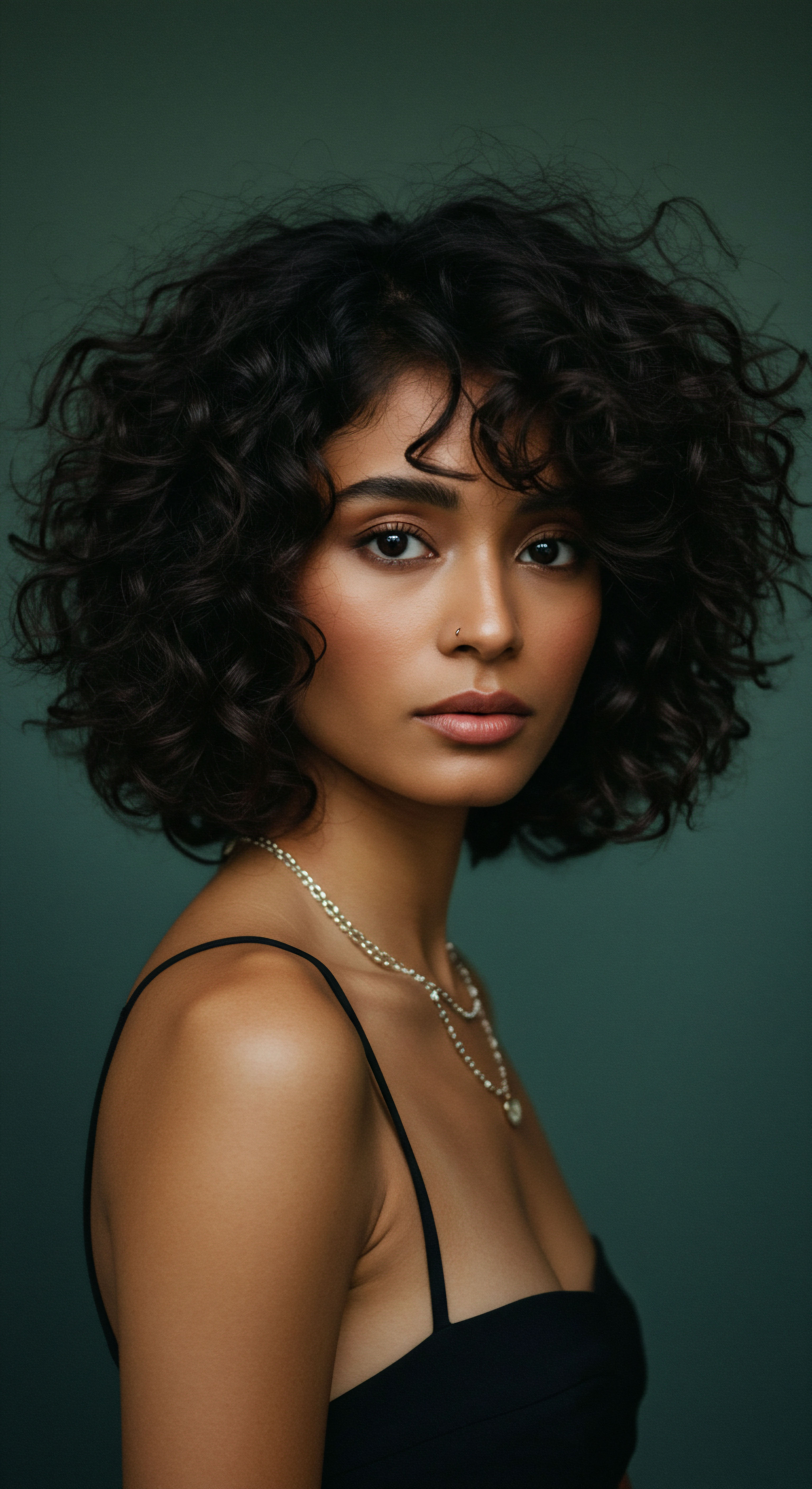
Styling with Structural Integrity
The way we style our hair directly impacts the integrity of its inner layers. Harsh manipulation, excessive tension, or improper heat application can compromise the cuticle and even the delicate protein bonds within the cortex.
Consider the widespread practice of protective styling. Styles like braids, twists, and buns shield the hair from environmental stressors and reduce daily manipulation. This protection is particularly beneficial for the often-exposed ends of coiled hair, which are the oldest and most fragile parts of the strand. By minimizing friction and external damage, protective styles help to maintain the cuticle’s integrity, thereby preserving the moisture within the cortex.
When applying styling products, the principle of layering from light to heavy often yields the best results. A lightweight leave-in conditioner first hydrates the cortex and provides a base layer for the cuticle. This can be followed by a cream or gel that provides hold and further seals the cuticle, reducing frizz and defining the coil pattern.
| Porosity Type Low Porosity |
| Cuticle Behavior Tightly bound, resistant to penetration |
| Recommended Product Types Lightweight leave-ins, humectant-rich products, heat for deep conditioning |
| Porosity Type Medium Porosity |
| Cuticle Behavior Balanced, moderately open |
| Recommended Product Types Balanced conditioners, versatile styling products |
| Porosity Type High Porosity |
| Cuticle Behavior Open, easily absorbs and loses moisture |
| Recommended Product Types Heavy creams, butters, protein treatments, occlusive oils |
| Porosity Type Aligning product choice with porosity type supports optimal hair health. |
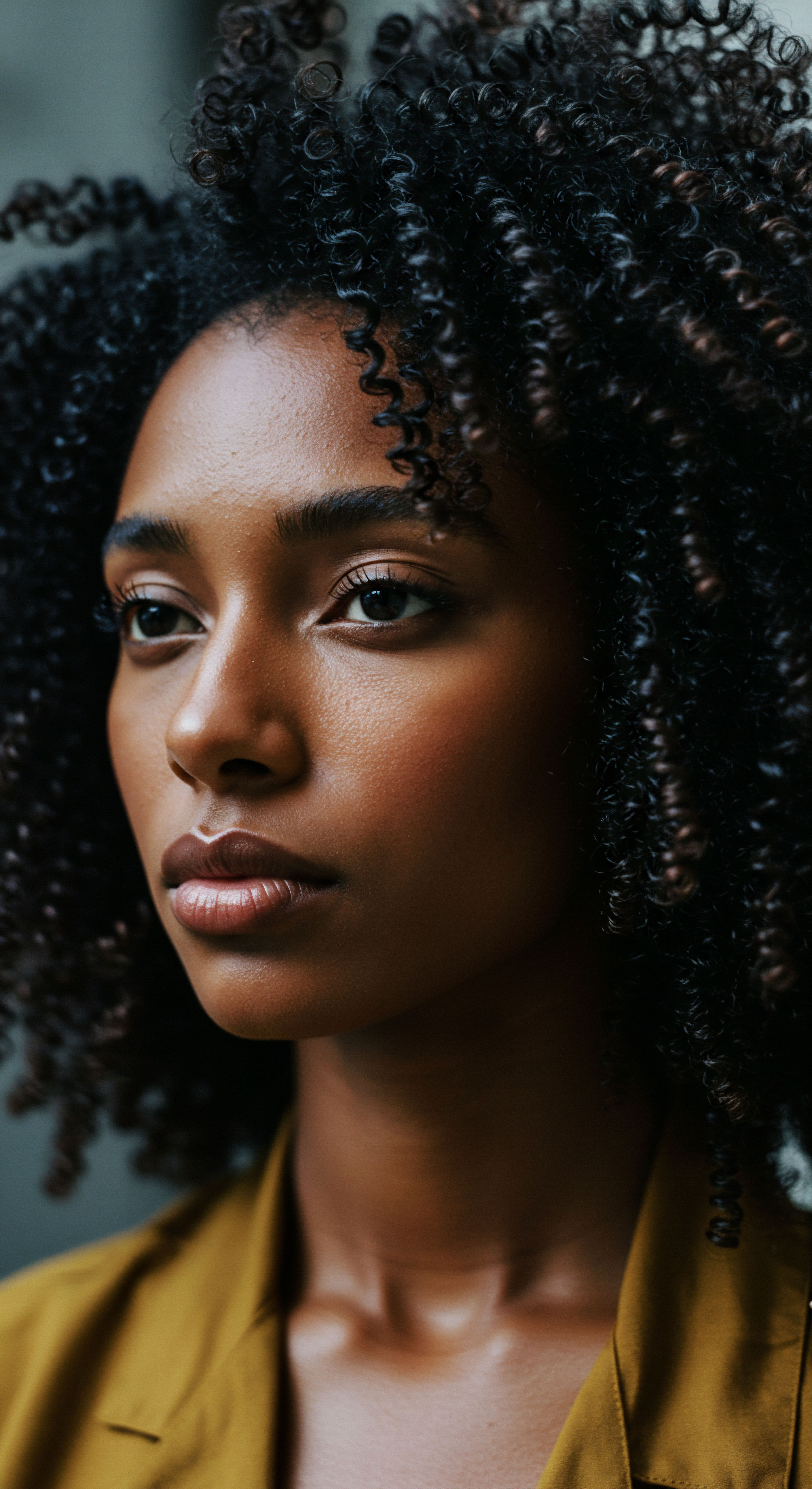
Relay
Stepping beyond the immediate touchpoints of daily care, we approach the deeper currents that influence the vitality of coils and curls—the interplay of genetic legacy, environmental forces, and the very cultural narratives that shape our relationship with our hair. The inner layers of our hair are not merely biological constructs; they are also silent witnesses to our heritage, our environment, and the care philosophies passed down through generations. To truly understand how to elevate daily routines, we must consider the broader context, acknowledging the multifaceted influences that contribute to the unique expression of textured hair. This section endeavors to bridge the gap between microscopic science and macroscopic lived experience, inviting a holistic perspective on hair well-being.
Our exploration extends to the subtle yet significant factors that impact hair from within, from the cellular blueprint to the external climate. It asks us to consider not just what we apply, but how our entire being and surroundings affect the very structure of our strands.
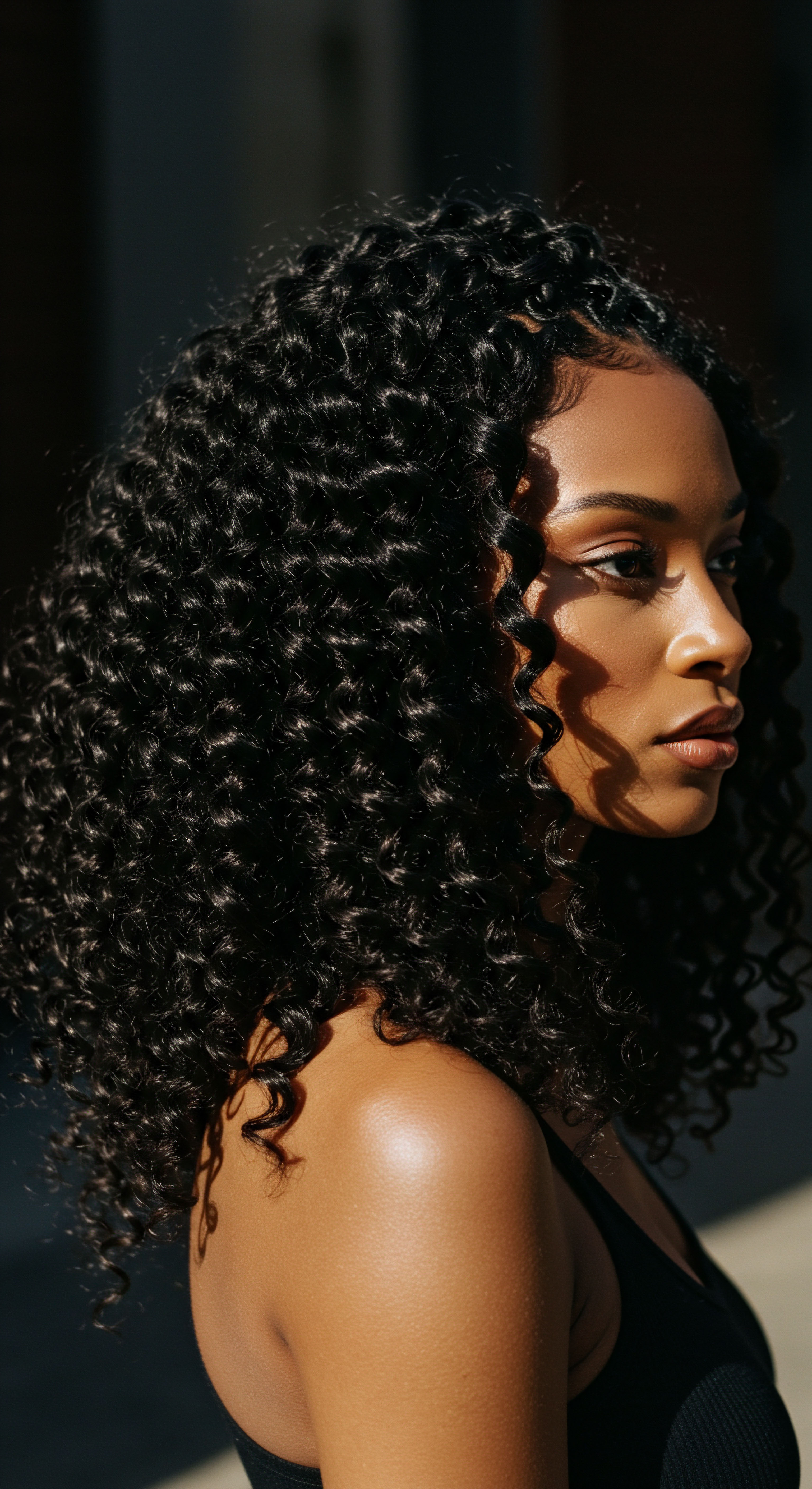
What Genetic Signatures Mark the Inner Layers of Coiled Hair?
The distinct helical shape of coiled hair is not a random occurrence; it is deeply encoded within our genetic makeup. Research has begun to identify specific genes responsible for the unique morphology of the hair follicle in individuals with highly textured hair. For instance, studies have pointed to the role of genes involved in keratinization and cell adhesion within the hair follicle.
The asymmetrical growth of the hair shaft from an elliptical follicle leads to the formation of the curl. This genetic predisposition directly impacts the arrangement of keratin fibers within the cortex and the stacking of cuticle cells, creating the inherent characteristics we observe.
This genetic blueprint explains why two individuals with seemingly similar curl patterns might respond differently to the same product or treatment. Their inner layers, while both coiled, may possess subtle variations in protein distribution or cuticle structure that demand a tailored approach. A deeper scientific understanding of these genetic markers could, in the future, allow for even more precise, personalized hair care solutions, moving beyond general porosity assessments to truly individualized regimens.
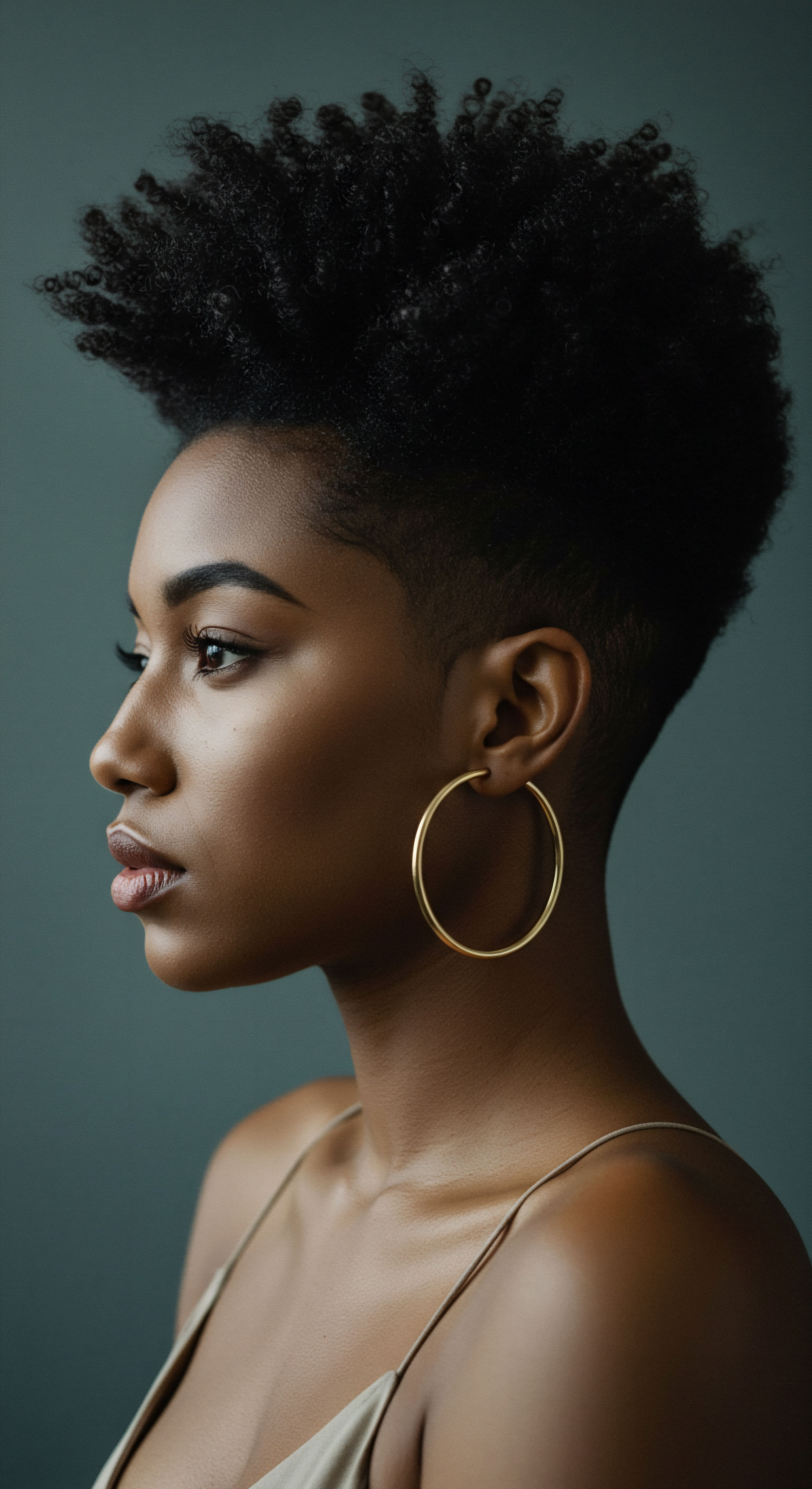
How Do Environmental Factors Impact Hair’s Internal Structure?
Beyond genetics, the environment exerts a constant influence on hair’s inner layers. Humidity, for example, is a powerful force. In humid conditions, water molecules can penetrate the hair shaft, particularly if the cuticle is raised, causing the keratin proteins in the cortex to swell.
This swelling can disrupt the delicate balance of the coil, leading to frizz. Conversely, in dry environments, hair can lose moisture rapidly, leading to brittle strands and increased susceptibility to breakage, as the cortex becomes dehydrated and the cuticle becomes more rigid.
UV radiation from the sun also plays a role. Prolonged exposure can degrade the proteins within the cortex and lift the cuticle, making hair more porous and prone to damage. Similarly, hard water, laden with mineral deposits, can accumulate on the hair shaft, hindering moisture absorption and making the cuticle feel rough. These environmental assaults necessitate protective measures in daily routines, such as leave-in conditioners with UV filters or chelating shampoos to remove mineral buildup.
| Environmental Factor High Humidity |
| Effect on Inner Layers Cortical swelling, cuticle lift, frizz |
| Routine Adjustment Anti-humectant sealants, stronger hold products |
| Environmental Factor Low Humidity/Dry Air |
| Effect on Inner Layers Moisture loss from cortex, brittle strands |
| Routine Adjustment Humectant-rich products, deep conditioning, sealing oils |
| Environmental Factor UV Radiation |
| Effect on Inner Layers Protein degradation, cuticle damage |
| Routine Adjustment UV protective products, hats, reduced sun exposure |
| Environmental Factor Hard Water |
| Effect on Inner Layers Mineral buildup, cuticle roughness |
| Routine Adjustment Chelating shampoos, vinegar rinses |
| Environmental Factor Adapting care to environmental conditions preserves structural integrity. |
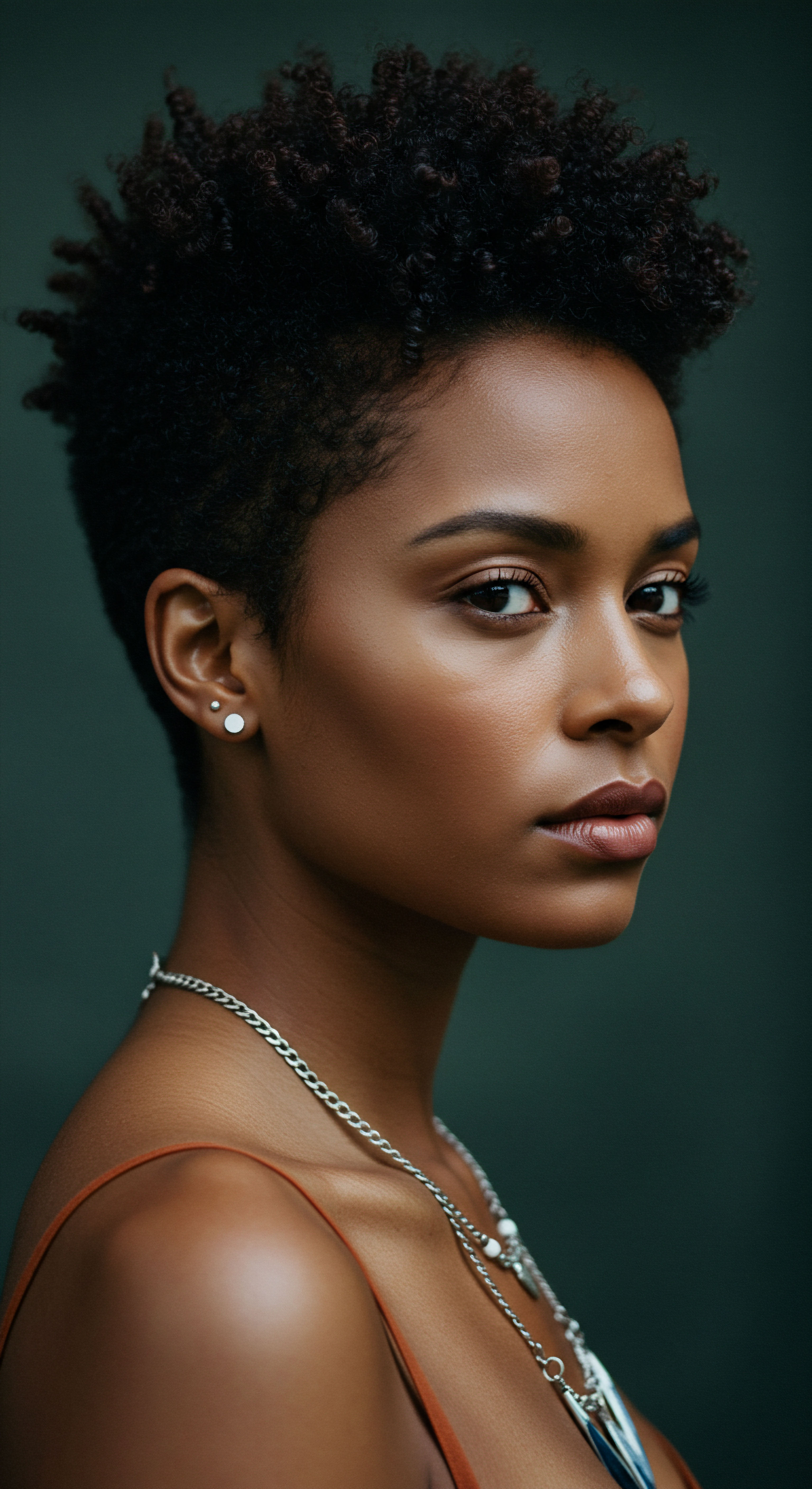
Cultural Perspectives on Hair and Its Care
The understanding and care of textured hair have long been intertwined with cultural practices and historical wisdom. Before modern trichology, communities developed sophisticated methods for maintaining hair health, often drawing upon indigenous botanicals and communal rituals. These practices, passed down through generations, often intuitively addressed the needs of hair’s inner layers, even without explicit scientific terminology. For example, the use of natural oils and butters in many African hair traditions served as occlusives, effectively sealing the cuticle and preserving moisture within the cortex.
The concept of “good hair” or “bad hair” within certain cultural contexts has historically created psychological burdens, influencing how individuals perceive and care for their natural texture. Moving past these outdated constructs involves not only scientific literacy but also a reclamation of self-acceptance and appreciation for the biological diversity of hair. Recognizing the unique strengths and needs of coiled hair, as dictated by its inner structure, helps to dismantle these harmful narratives and fosters a more affirming relationship with one’s natural self.
Hair’s inner layers are a testament to genetic artistry, shaped by environment, and cherished through cultural heritage.
This cultural lens reminds us that hair care is more than just a chemical process; it is a profound act of self-care, cultural affirmation, and connection to a lineage of wisdom. By blending scientific understanding with ancestral practices, we create a truly holistic approach to hair well-being, one that honors both the microscopic and the magnificent.
- Genetic Predisposition ❉ The inherited blueprint dictating the hair follicle’s shape and thus the curl pattern and internal structure.
- Environmental Impact ❉ External factors like humidity, UV, and water quality influencing hair’s physical state.
- Cultural Practices ❉ Traditional care methods and societal perceptions shaping hair care routines and self-image.
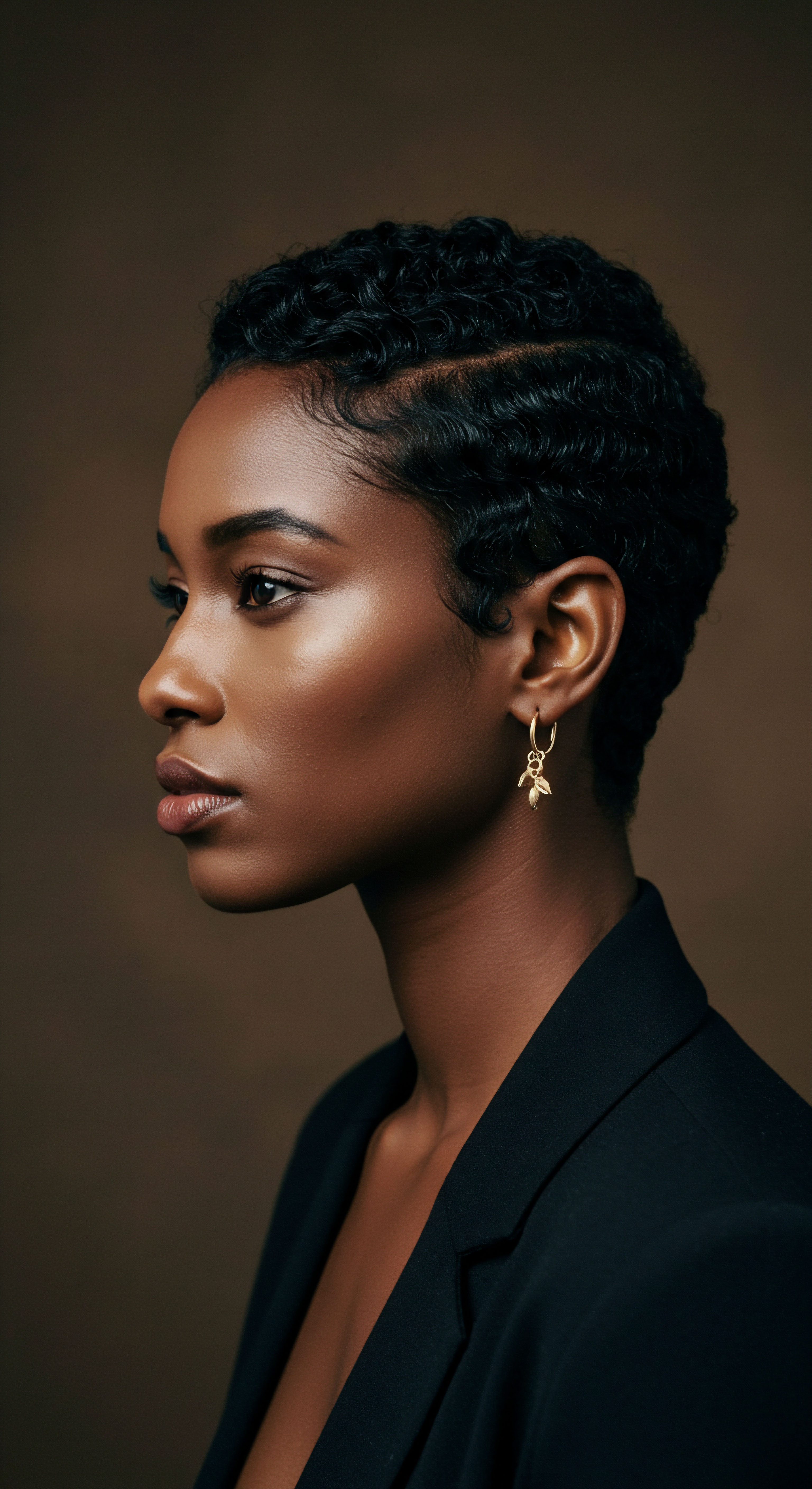
Reflection
Our exploration into the hidden world of hair’s inner layers reveals a landscape far richer and more responsive than often perceived. From the overlapping scales of the cuticle to the intricate protein bundles of the cortex and the enigmatic medulla, each component holds a key to unlocking vibrant, resilient coils and curls. This deeper awareness transforms daily routines from a series of prescriptive steps into a thoughtful, intuitive conversation with our hair.
It empowers us to choose products with purpose, apply techniques with precision, and ultimately, celebrate the unique expression of our natural texture with an informed reverence. The journey inward, it turns out, is the very path to external radiance.
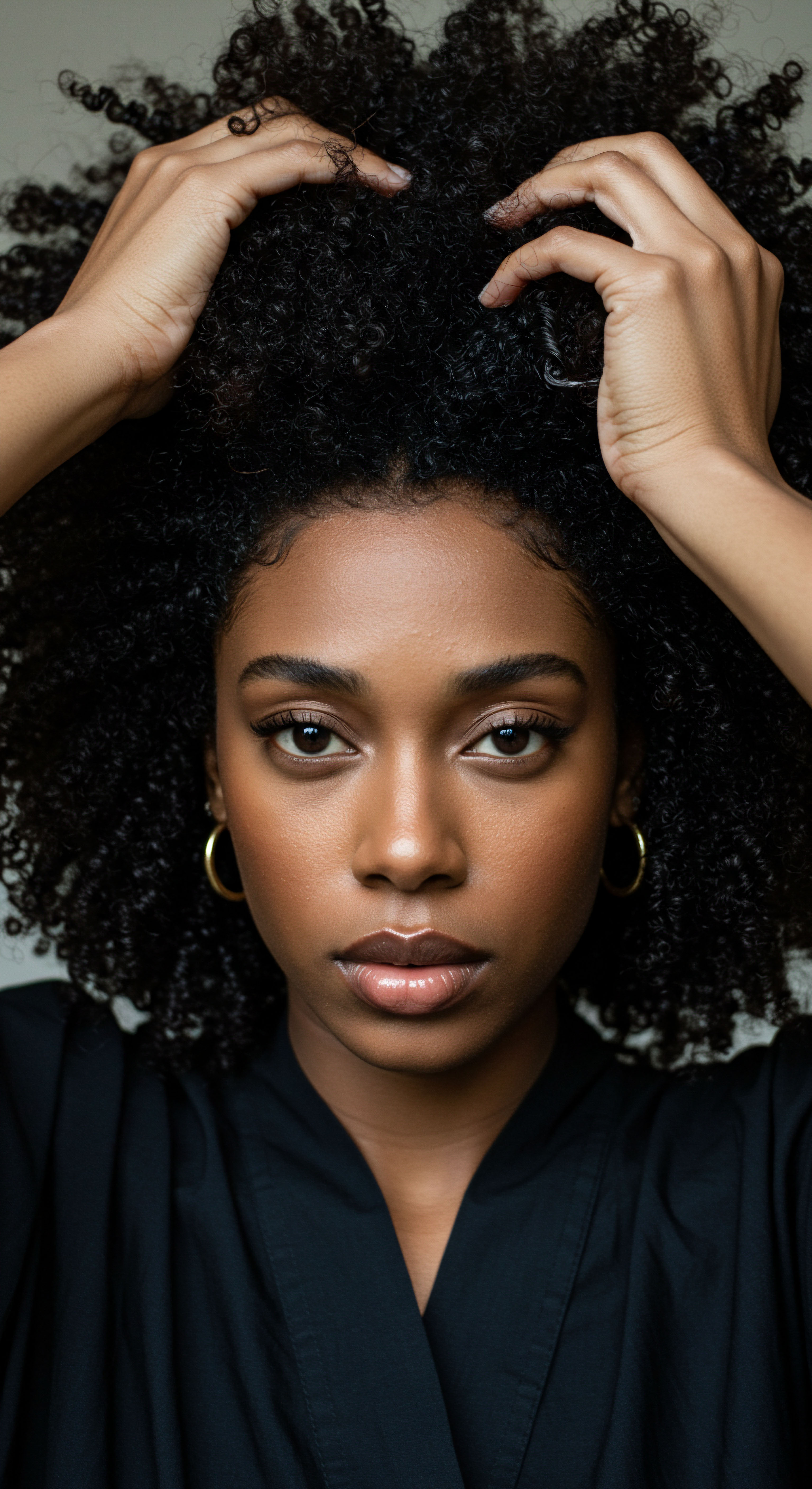
References
- Robbins, Clarence R. Chemical and Physical Behavior of Human Hair. 5th ed. Springer, 2012.
- Khumalo, Ncoza D. et al. “Hair Breakage in African Hair ❉ Mechanical Properties and Microscopic Observations.” Journal of Cosmetic Science, vol. 60, no. 1, 2009, pp. 1-13.
- Popescu, Catalina, and Douglas W. D. Cooke. The Physics and Chemistry of Hair. Royal Society of Chemistry, 2011.
- De la Mettrie, R. “The Influence of Relative Humidity on the Physical Properties of Hair.” International Journal of Cosmetic Science, vol. 27, no. 4, 2005, pp. 209-216.
- Kelly, Regina. Hair Story ❉ Untangling the Roots of Black Hair in America. St. Martin’s Press, 2001.
- Gueniche, Audrey, et al. “Impact of the Hair Fiber on the Overall Appearance and Self-Perception.” International Journal of Cosmetic Science, vol. 36, no. 2, 2014, pp. 109-115.
- Swift, J. A. “The Molecular and Cellular Biology of Hair.” Journal of Investigative Dermatology Symposium Proceedings, vol. 8, no. 1, 2003, pp. 1-6.